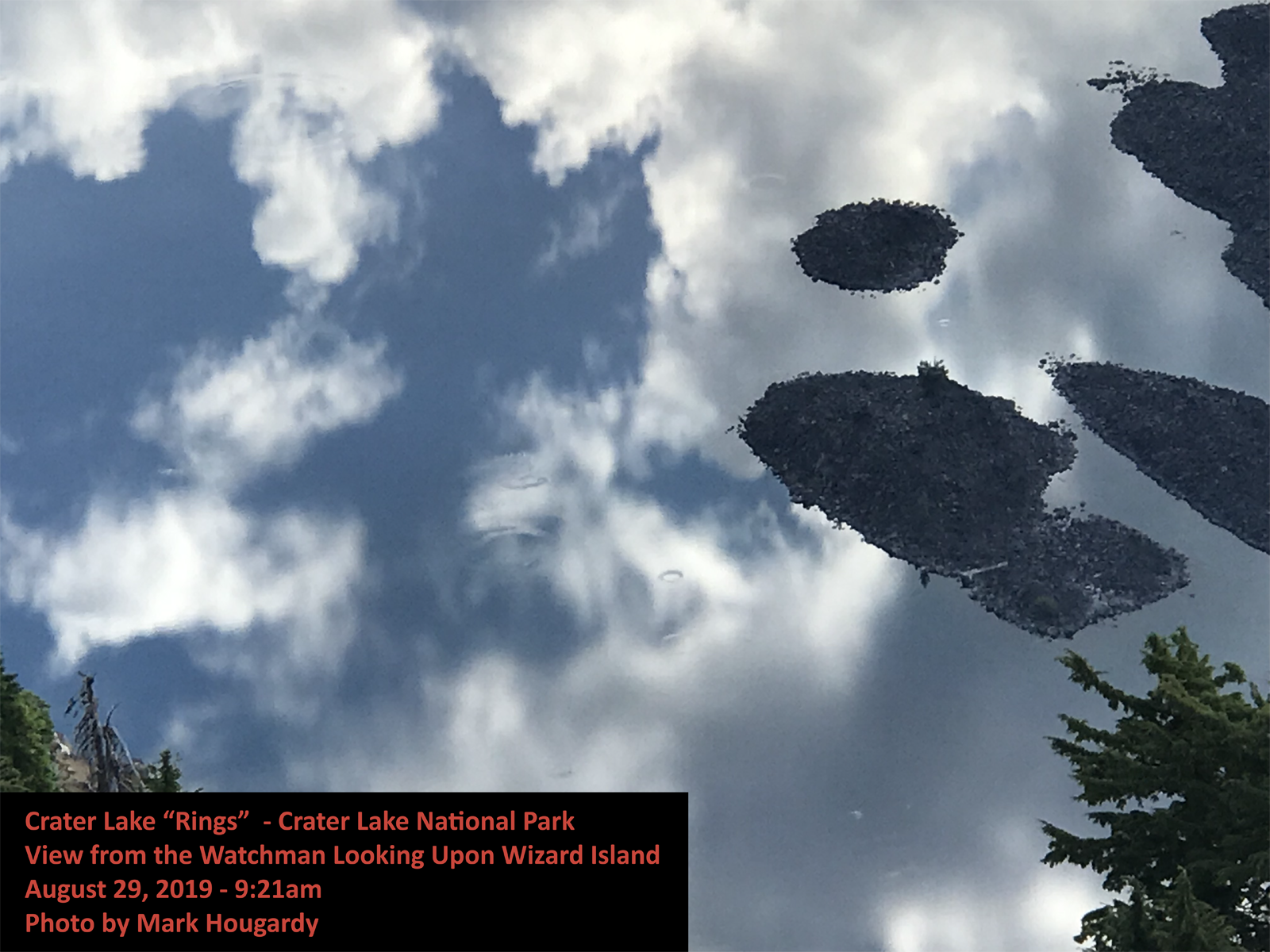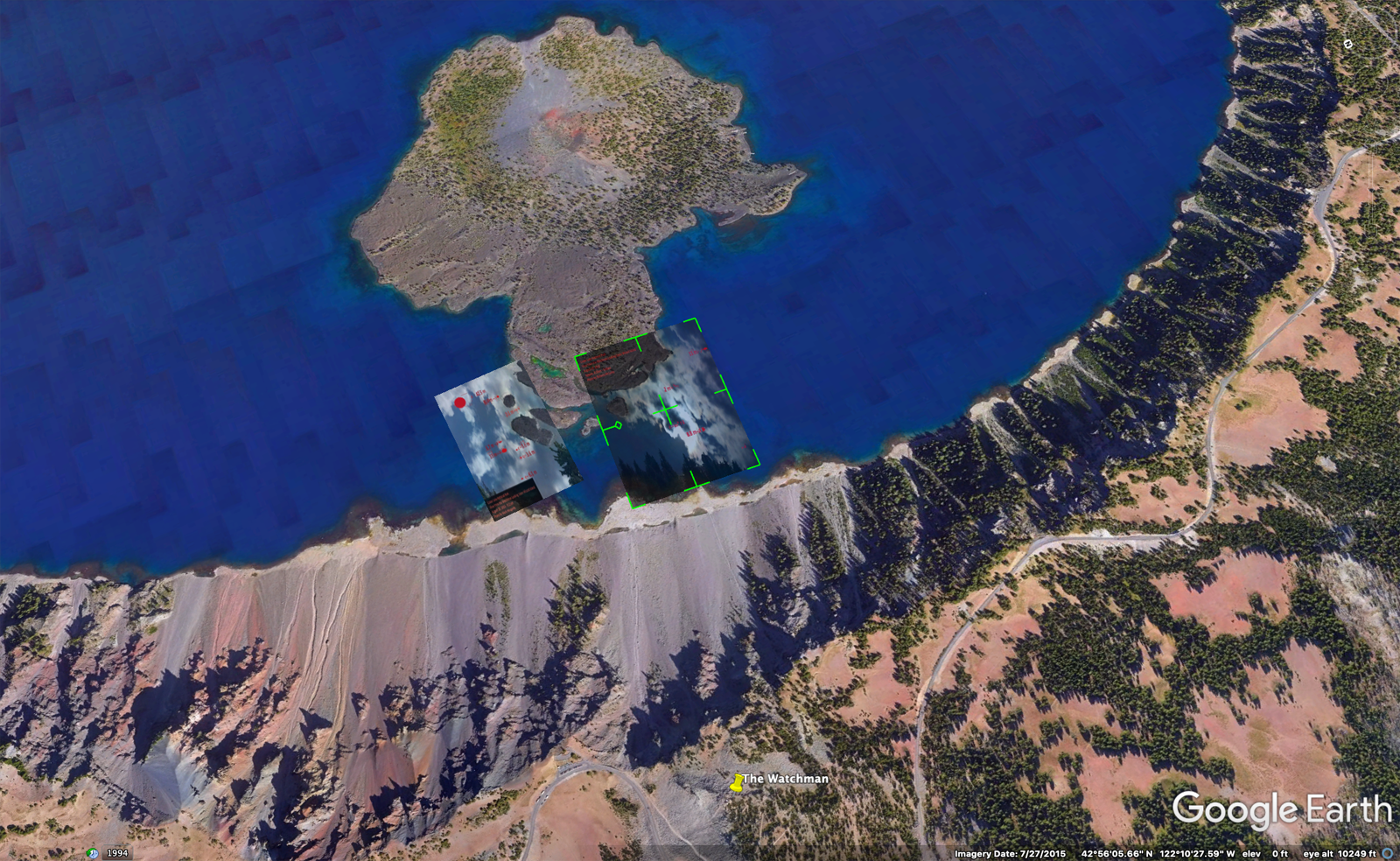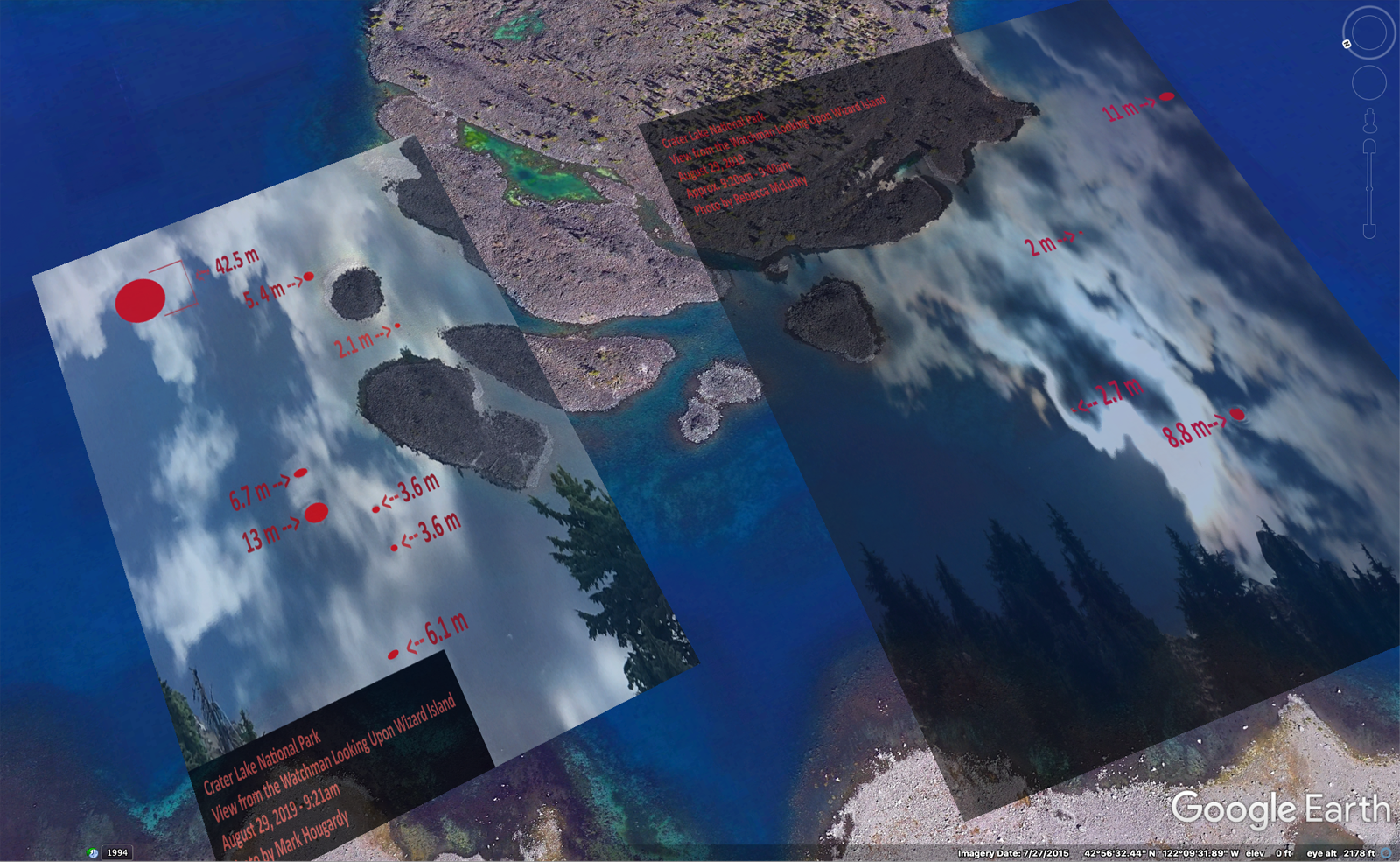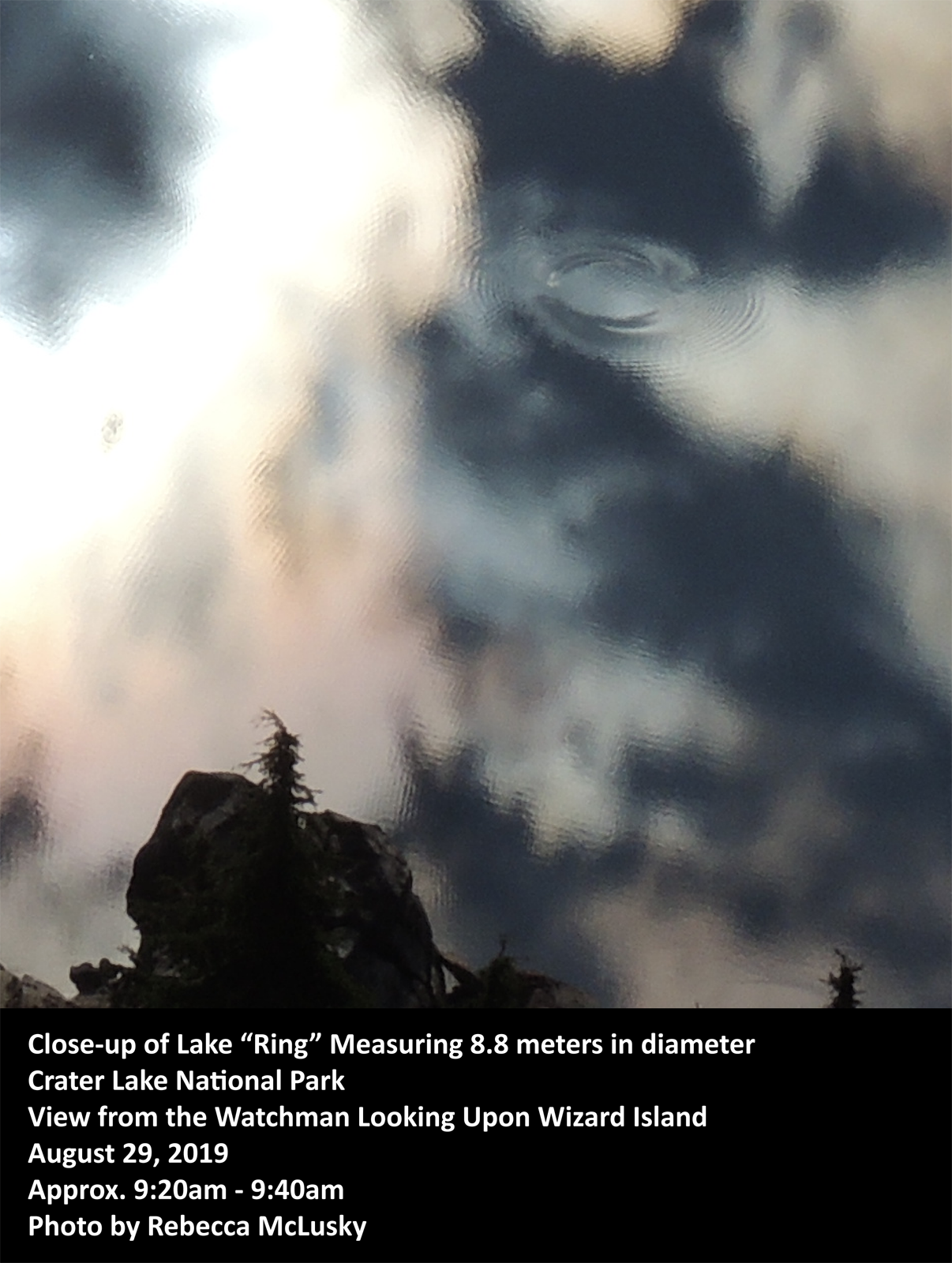Crater Lake National Park never ceases to amaze the viewer, but this time the lake astounded me and my Road Scholar participants with some mysterious rings seen upon the lake’s surface.
These unusual rings were viewed near Wizard Island from Watchman Peak and were observed on August 29, 2019, between 9:20 am & 9:40 am (approximately).

That morning, my educational tour group had hiked to the summit of Watchmen Peak. We were treated to an expansive vista over an exceptionally peaceful Crater Lake. The gigantic body of water mirrored the sky as there was no wind, nor any waves caused by the island excursion boats. What we did see upon this flat liquid pallet were multiple “rings.” At first, the rings appeared to be raindrops to the west and southwest of Wizard Island (in the Skell Channel area), yet our perspective was 800 feet higher and three-quarters of a mile distant. These rings were sizable!
I had never observed such rings during multiple visits to the lake. Were these new? Had I not observed them before because of wind, light, or other surface conditions? -The mystery is afoot!
As my group arrived at the summit several of the participant’s phones reconnected with cell service. The group had been a couple of days without any service and a few people were eager to check email, news, etc. One person exclaimed that about an hour earlier (approx. 8 am Pacific) a 6.3 earthquake had struck off the Oregon coast. The question was raised, could a massive and distant energy release encountering a different density (energy waves traveling from rock then to liquid, especially upon a very still body of water) have allowed stored gases in a shallow area of the lake to escape, causing these rings?

It was intriguing, yet an earthquake some 200+ miles distant seemed remote. What there a more likely cause? The area in the Skell Channel area is relatively shallow (from 60 to 200 feet deep) compared to the rest of the lake, and has an abundance of underwater moss. The water at Crater Lake is known for its clarity and this massive biomass might have been bathing in a bounty of sunlight. The weather for several days prior had been mostly sunshine with only some rain that night…could these conditions have accelerated photosynthesis? What about springs in the area? Based on the ring images (especially the close-up image) this seems likely, but Crater Lake is essentially a closed system, its small watershed (the rim of the lake) means the lake receives all its incoming water from snow-melt and rain. There is supposedly some hydrothermal spring activity on the bottom of the lake, but this appears to be limited and at greater depths.
Was there a more likely explanation? I reached out to the Crater Lake Institute and the Oregon Master Naturalist program for help. I also included some photos of the curious phenomena, including one close-up, and several photos that were overlaid with Google Earth to help with identifying the location and determining the scale.


The diameter of some of the rings was massive:
2.1 meters
3.6 meters
5.4 meters
6.1 meters
6.7 meters
8.8 meters
11 meters
42.5 meters

After a few emails were exchanged one cause of the rings’ formation was the most supported: “unusually strong photosynthetic activity by prominent beds of submerged plants, which occur in shallow waters around Wizard Island creating supersaturated oxygen levels, resulting in oxygen bubbles rising to the surface.” – Crater Lake Institute.
This sounds very plausible and I’m grateful for the feedback. I am curious if there is any research or photos showing this phenomenon in previous years. If anyone has any knowledge, please contact me. Seeing the rings was amazing and I hope to return on future clear summer days to gather some additional data.
Thank you to the Crater Lake Institute and the Oregon Master Naturalist program!
